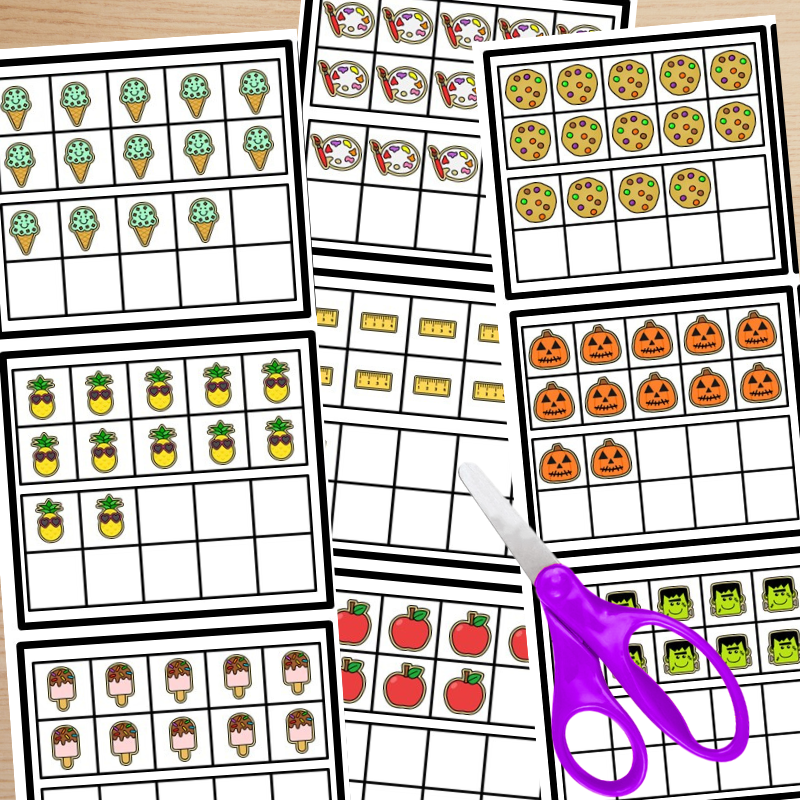Printable ten frame cards are a great way to help students develop strong number sense and can be used for a variety of fun games and activities. Read on for printable flashcards and other hands-on activities using tens frames!
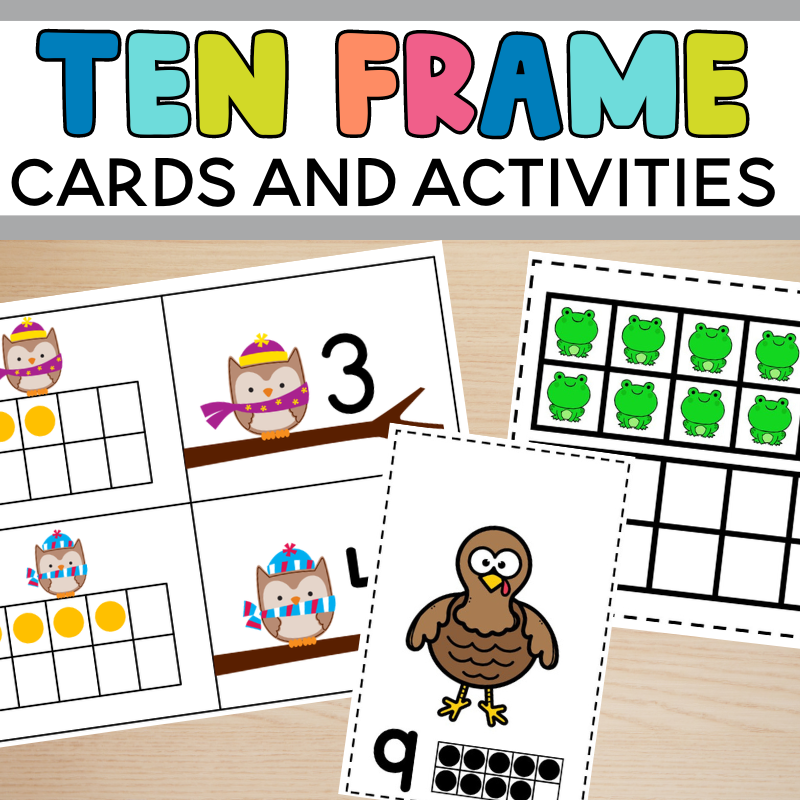
What is a ten frame?
A ten frame is a simple yet effective visual tool to help young children understand numbers, learn to anchor to the number 10, and develop their counting skills.
A ten frame consists of a rectangular frame with two rows of five squares each. The ten frames provide a structured way for children to visualize numbers within the context of a group of ten.
This is one of the visual tools for teaching math often used by kindergarten students and first graders.
What is a ten frame used for?
A ten frame is used to help young learners easily grasp the concept of number relationships, subitizing (recognizing the number of objects without counting), and basic addition and subtraction.
The ten frame serves as a hands-on and interactive resource that lays a solid understanding of numbers for more complex mathematical concepts later in their educational journey.
Ten frames also promote:
- Conceptual subitizing
- One-to-one correspondence
- Visual representation of numbers
- Number recognition
- Addition and subtraction skills
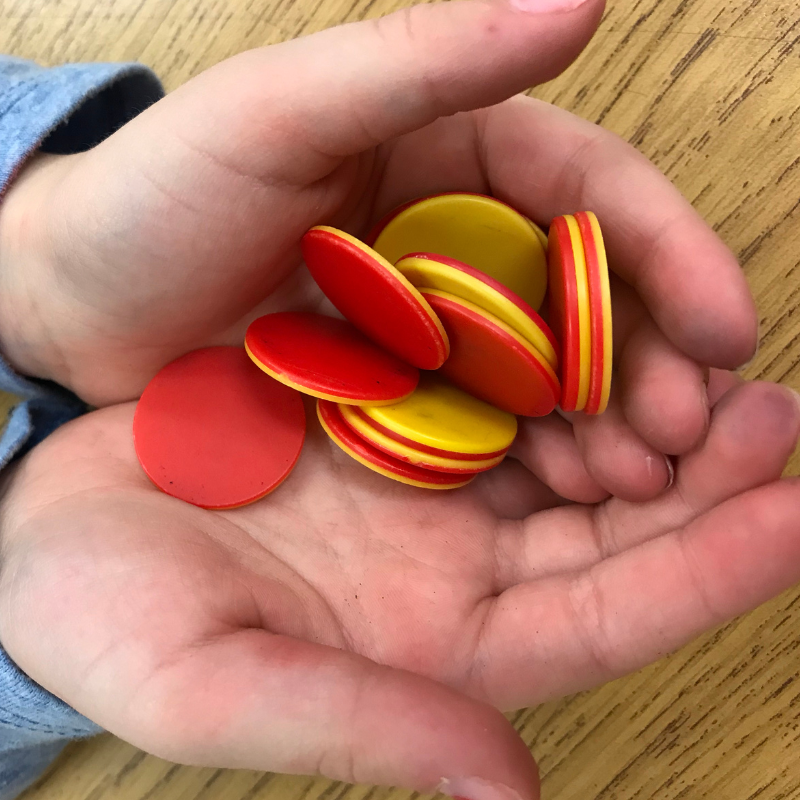
How do you fill a ten frame?
Filling a ten frame is a straightforward process that involves representing numbers or quantities within the frame’s structured layout. Here’s how you can fill a ten frame:
- Begin by identifying the number you want to represent or illustrate within the ten frame.
- Place objects, such as counters, small toys, or any other tangible items, into the squares of the frame, starting from the top left and moving to the right, filling each row before moving to the next.
- For each object or counter you place in the frame, ensure that it corresponds to one unit or quantity of the number you’re representing. For example, if you’re representing the number 7, you would place seven objects in the frame.
- Continue filling the frame until all the squares are occupied or until you’ve represented the desired number or quantity.
By using this method, children can visually comprehend and engage with numbers, facilitating a hands-on learning experience that fosters a deeper understanding of numerical concepts and relationships.
How can you make your own ten frames?
You can easily make tens frames for little learners using simple craft supplies. Here’s how:
- Collect materials such as cardboard, card stock, paper, or any other sturdy material that you can use as a base for your ten frames. You’ll also need a ruler, a pencil, and some dot stickers.
- Using a ruler and pencil, measure and draw a rectangle on your chosen material. Divide the rectangle into two rows, each containing five smaller squares. Ensure that the squares are of equal size and evenly spaced to maintain consistency.
- Add dot stickers to each frame flashcard to represent the desired numbers.
- For added durability, consider laminating your ten frames to make them sturdier and more long-lasting. This step is especially useful if you plan to use the ten frames repeatedly or if you want them to withstand wear and tear from young children.
- Once you’ve completed the design and any optional laminating, carefully cut out the individual ten frames, ensuring that the edges are smooth and even.
That’s it! You now have your very own set of homemade ten frames ready to use for various educational activities, games, or math centers. Making your own ten frames not only allows for customization but also encourages hands-on involvement, making the learning process more interactive and enjoyable for both you and the children using them.
Free Printable Ten Frame Cards
Don’t want to create your own? I’ve created a few printable ten frame cards to help you teach! These frame templates can be used in many different ways for many different activities.
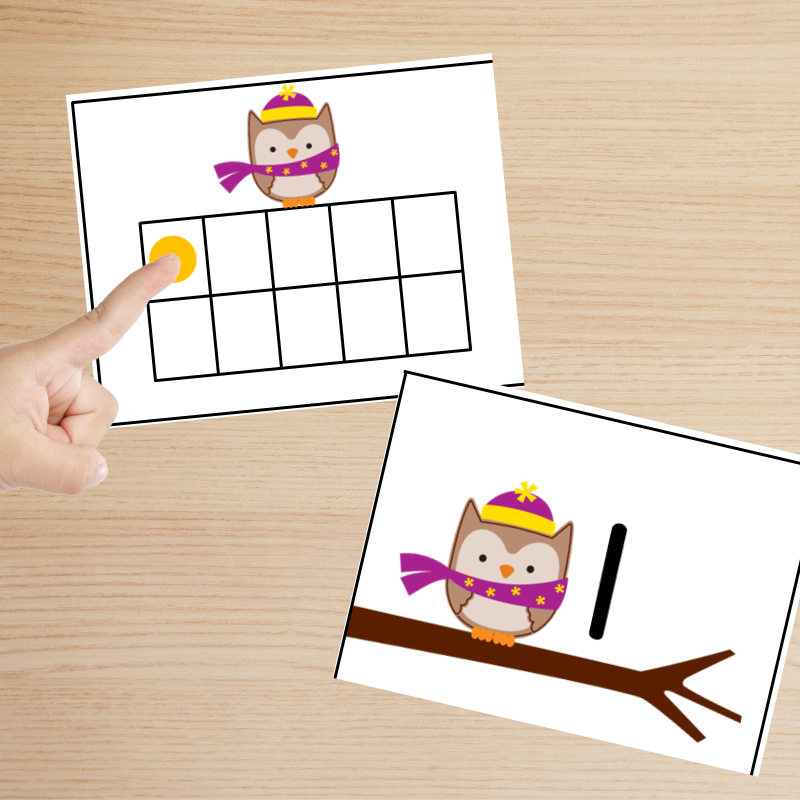
These Winter Owl Ten Frame Cards are a free download available in my Teachers Pay Teachers Store. They are an easy way to practice recognizing numbers in a ten frame and can be used in a variety of ways including matching games or as ten frame flash cards.
Ten Frame Activities
Count and Write the Room Activities
Count and write the room activities are a fun way for young children to practice counting objects in a ten frame. Children will love counting and writing numbers the entire school year with these Kindergarten Count and Write the Room Activities.
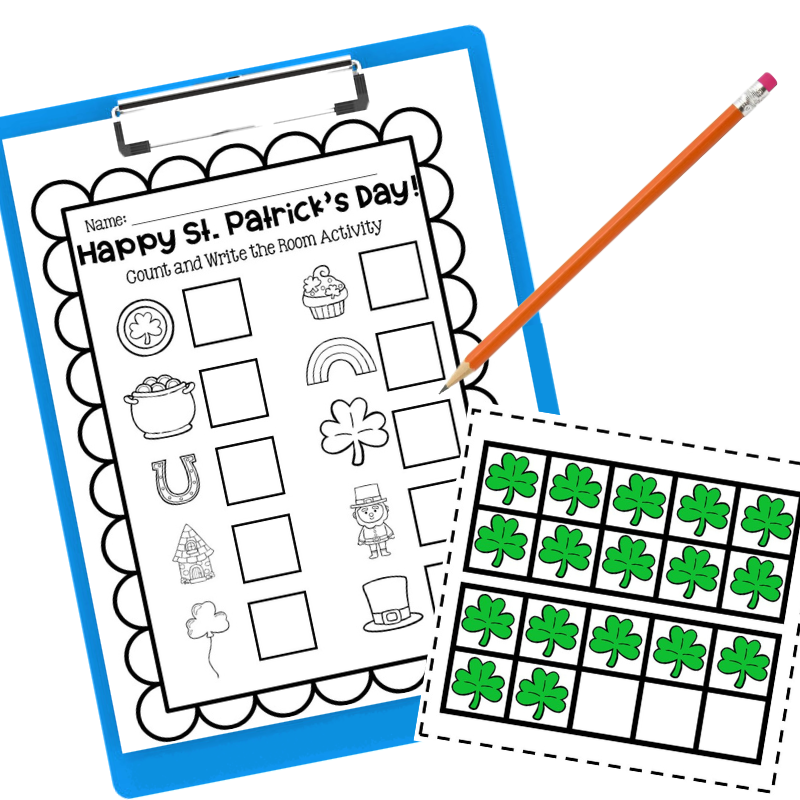
10 fun themes are included to keep students engaged and help them practice counting objects while anchoring to the number 10.
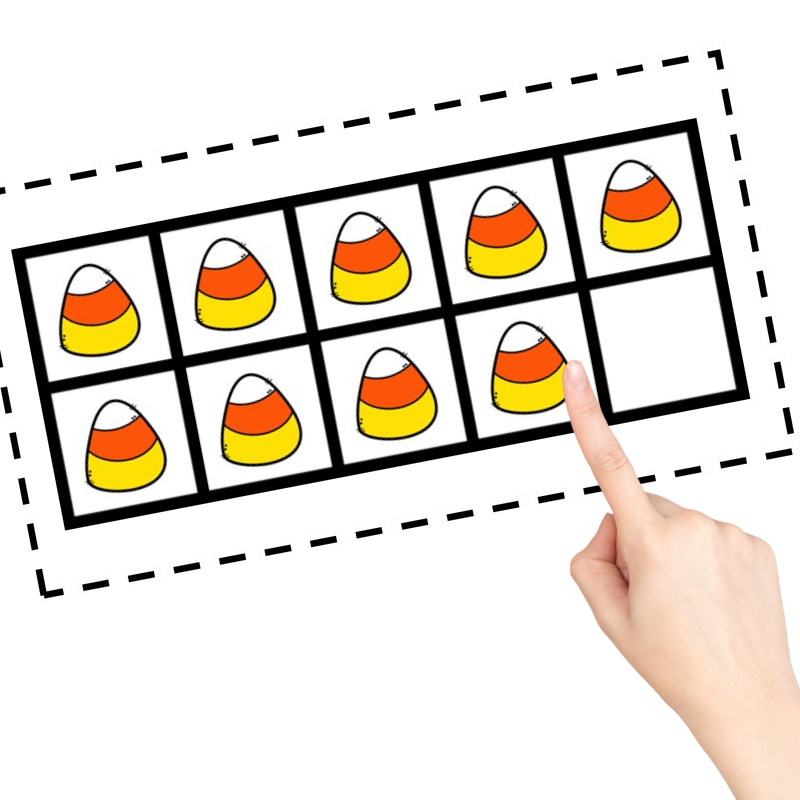
For more counting activities, be sure to check out this post: 12 Counting Activities to Teach Numbers 1-10.
Compare and Color Activities
This is a great activity for students to practice comparing numbers in a ten frame.
Students will find each turkey and identify each number represented in the tens frame by looking at the different combinations of dots. Next, students will decide which number is the greater number and color the response page to match the color of the object with the greatest number.
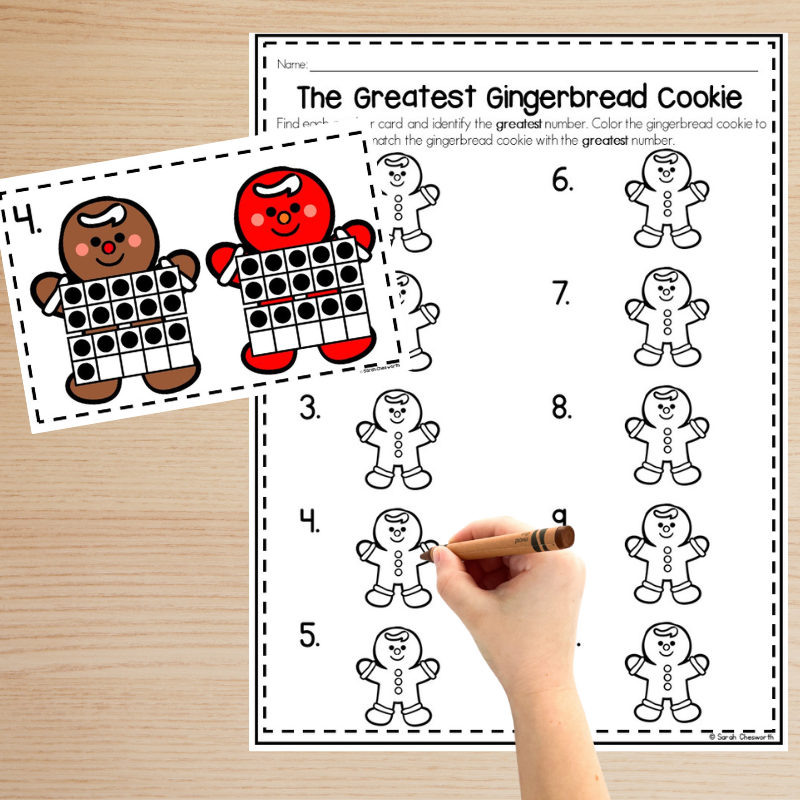
These compare and color activities are available in many different themes throughout the school year including turkeys and gingerbread cookies. They can be used as a math center or for independent practice.
Ten Frame Worksheets
This Q-Tip Painting Ten Frame is one of my favorite printable resources to use with young children. Young children will complete this activity by filling in each ten frame with the correct number of painted dots using washable paint and a q tip. This is great for promoting fine motor skills as well.
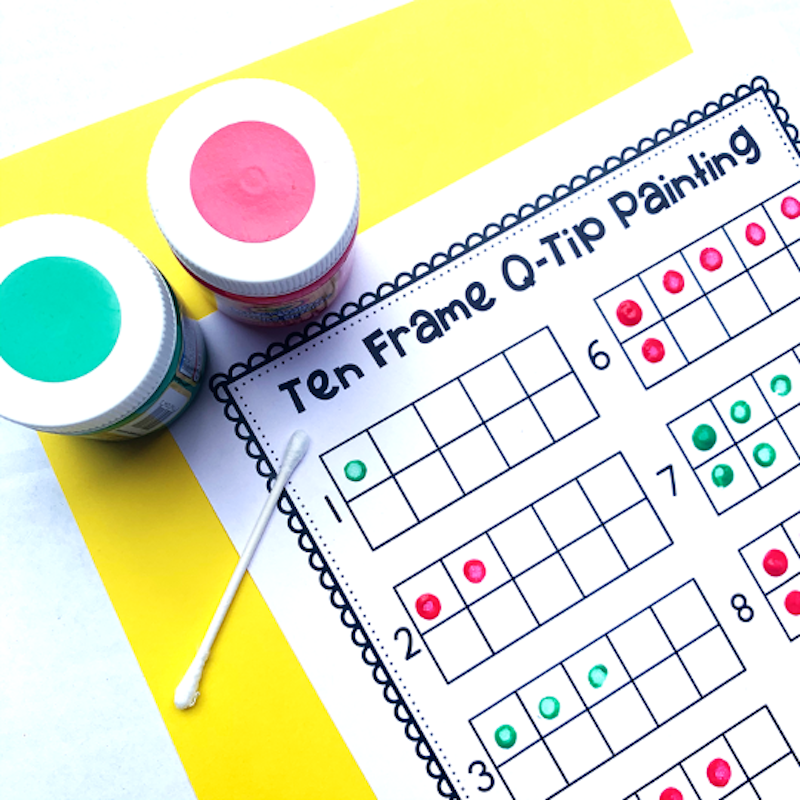
You can print this activity for free by visiting this blog post, Printable Q tip Painting Templates.
Ten Frame Games
Ten frames can also be used for simple games. Here are a few ideas to get you started!
Pocket Chart Matching
Make teaching ten frames tasty with these adorable cookie ten frames matching cards with numbers 1-20! Students will love matching each cookie sheet number to the correct ten frames of themed cookies. This is a great way for Kindergarten students to practice number recognition, counting, and number ordering throughout the school year too!
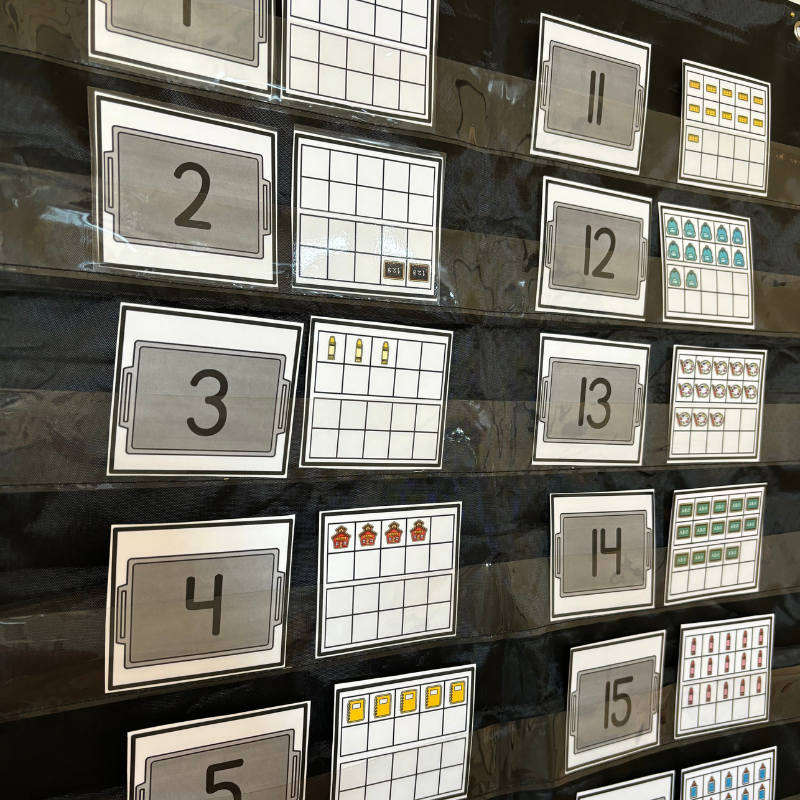
This simple activity will quickly become a staple math center in your classroom and can be used easily in a
Matching Games
Ten frame cards can also be used for matching games. First, print or make ten frame cards and number cards, These Cookie Number Ten Frame Matching Cards work great!
Next, turn all cards face down. Students will take turns flipping over two cards. If the cards match they will take the pair and have another turn. If the cards don’t match the player will turn the cards back over and let the next player take their turn.
The player with the most matches wins the game! Students can also use the cards in a
Subitizing
Frame flashcards can be used for practice with subitizing. Subitzing is when you quickly recognize a quantity without needing to take the time to count each object. Show students each card and have them tell you the number as quickly as they can.
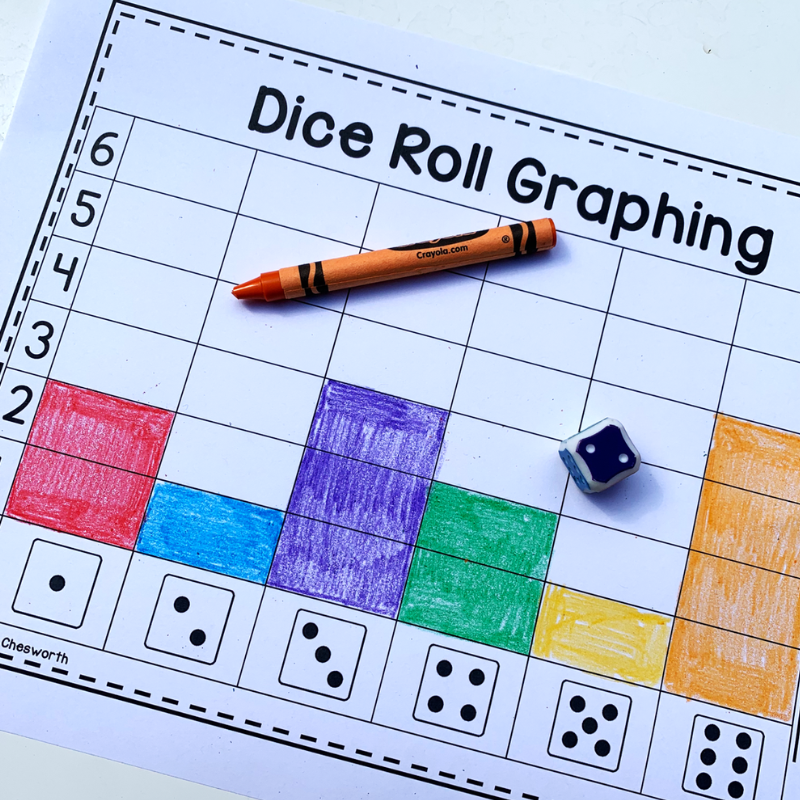
Dice activities are helpful for practice subitizing too! Check out this post, Kindergarten Math Games with Dice for more printable pdf activities to practice this skill!
Build a Number
Orally tell or show students a number. Start with numbers 0-10 and then work up to teen numbers. Students will use two-sided counters, math manipulatives, or play dough to build that number in the ten frame.
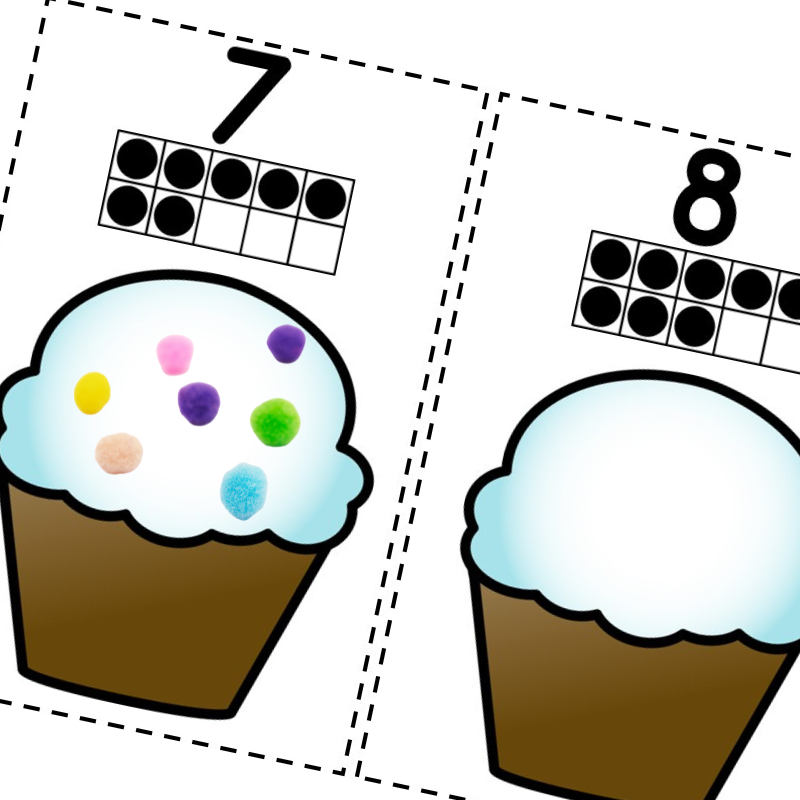
These simple themed ten frame mats are available for every month inside, Toddler Activities Bundle.
Addition and Subtraction with Printable Ten Frame Cards
Blank ten frames are a wonderful visual tool for addition and subtraction. Students can use the frame and counters to solve addition and subtraction problems.
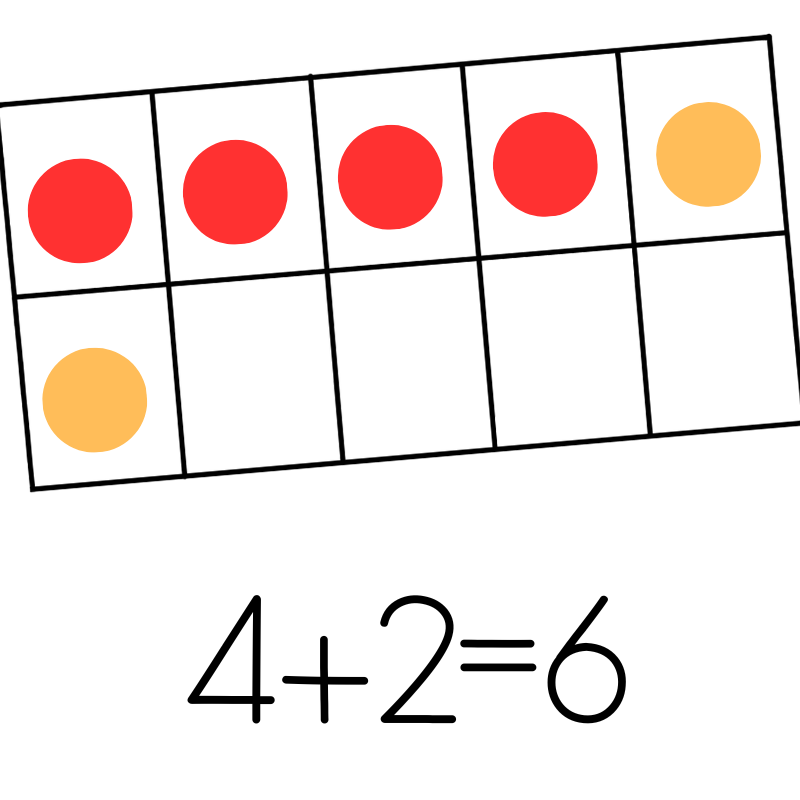
Students can also write a number sentence or number bonds to match.
Printable Ten Frame Cards
Printable ten frame cards are a wonderful visual tool for young children learning math. Hopefully, you can use some of these options in your classroom for teaching your students.

